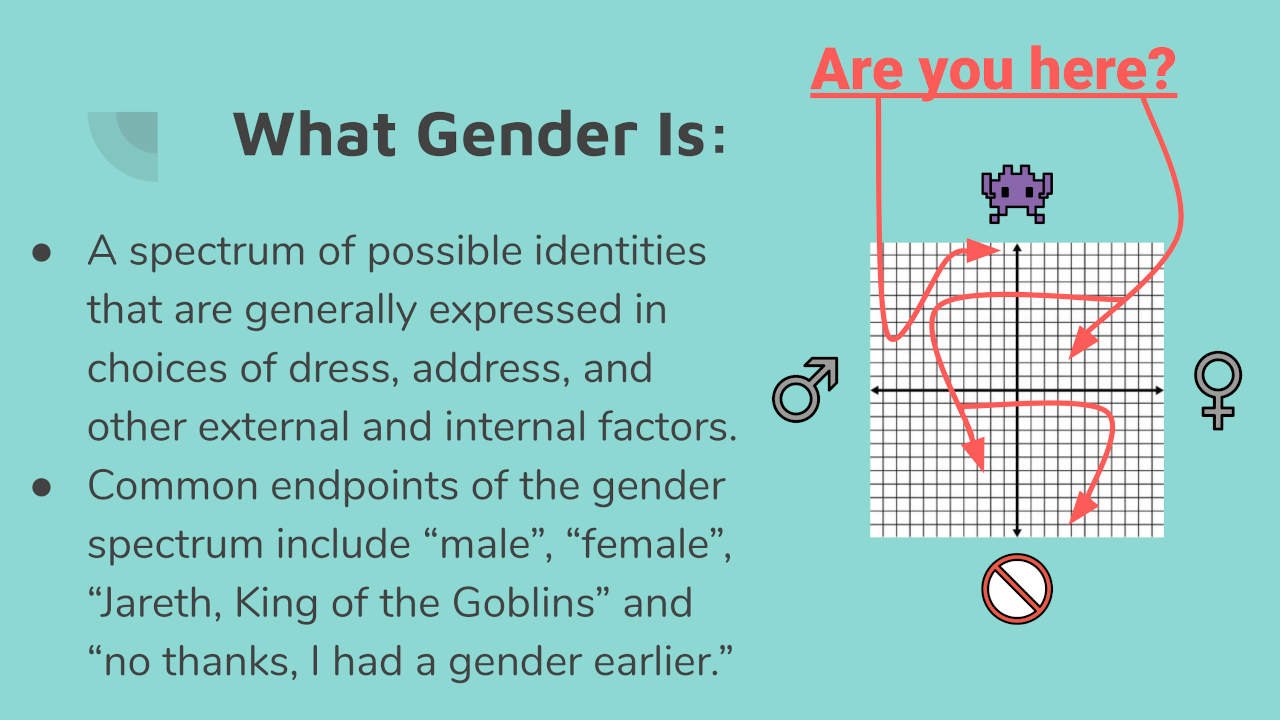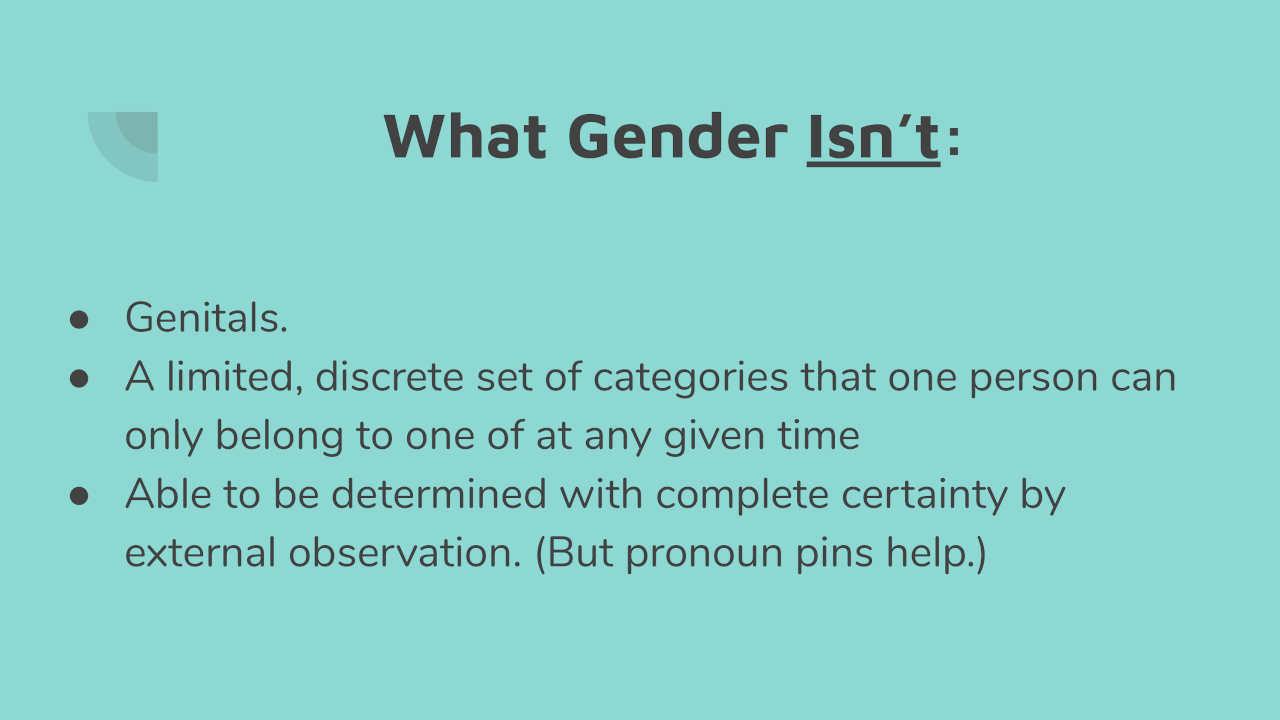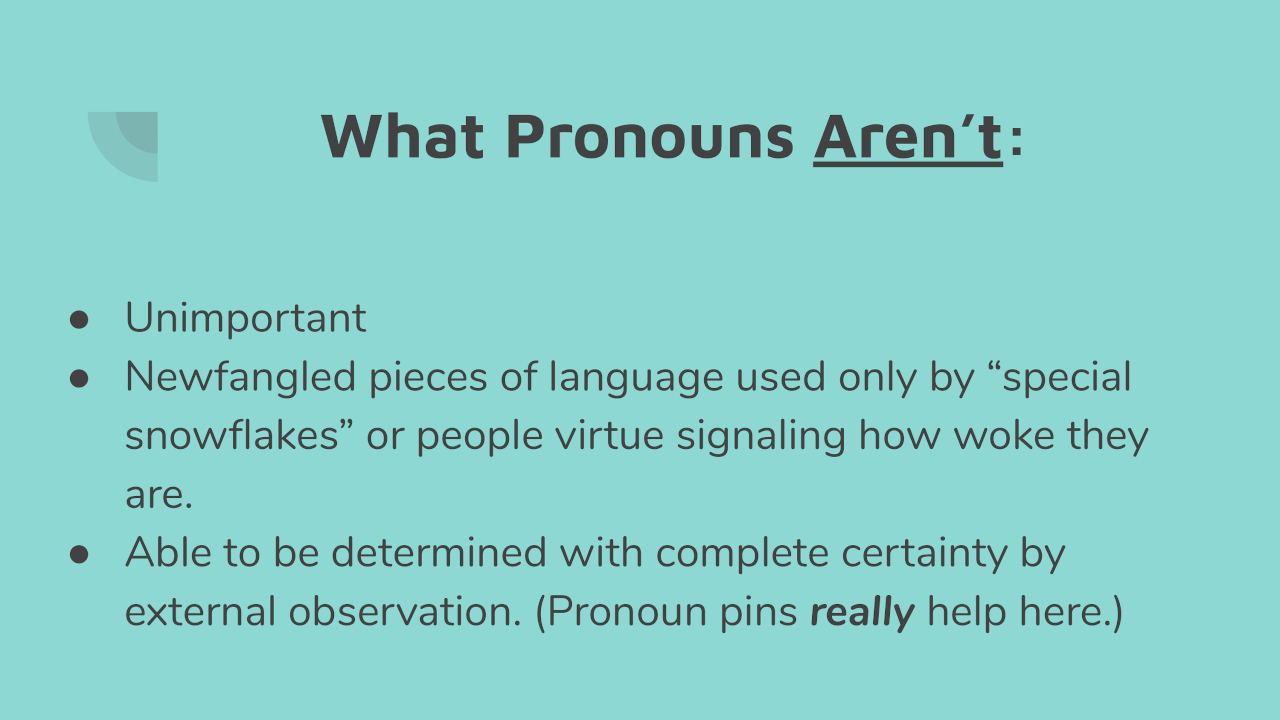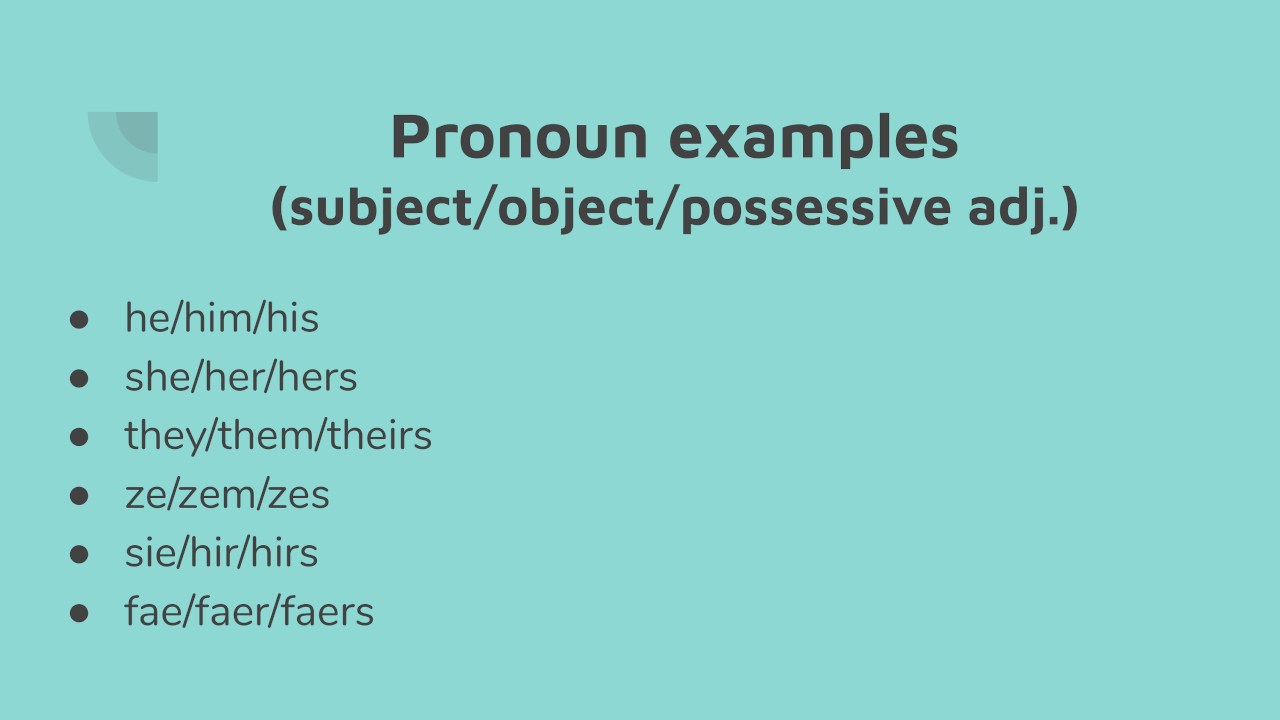
The pronouns a person uses is intimately linked to their gender identity (the gender that a person says is theirs.) Gender identity, rather than being a binary of two points (man or woman), or even a line with two end points (man and woman), is much more of a multidimensional coordinate system with different axes that describe aspects of someone's gender identity, which can include "male"/"female" but can also include "Jareth, King of the Goblins (and Genders)"/"No thanks, I had a gender earlier."

Gender identity is a complex thing, and it doesn't always follow anything that a person displays on the outside. Identity does not always follow gender expression, as not everyone who claims a certain gender identity wants to look a particular way (and for some gender identities, there really isn't a way of conveying it easily) You can't tell what gender identity a person has by looking at their body, and that includes if you're privileged enough to look at their genital configuration.
Gender identity is also not a fixed property of a person. People can and do change their gender identities, sometimes after a long period of contemplation and thought, and sometimes because they woke up with a particular gender identity that day. And not everyone is necessarily at one of the endpoints of gender scale on any given day. It's normal for a person's gender identity to only be leaning in one direction or another, or squarely in the middle, or to discard that axis entirely as relevant to their gender identity. What constitutes a gender identity is different to everyone.

Pronouns are pieces of language that allow you to refer to a person or a group of people without using their names, because sometimes you want to be able to talk about all of your co-workers or family members without having to list them individually.
Pronouns are also a useful way for someone to signal where in Gender Identity n-space they are, because, as we noted above, external characteristics are insufficient to know what someone's gender identity is.

Pronouns are vitally important to people who want to respect and refer to someone according to their correct gender identity. To do otherwise is, at best, an unintentional social faux pas that can be corrected, and at worst, a deliberate act of aggression and violence against another person by insisting that your incorrect perception of them is more important than their stated identity.
Pronouns are still being used as a proxy to fight other social battles around recognizing a person's gender identity or allowing them to live under their correct gender identity, instead of insisting that whatever genital configuration they were born with is their gender identity and cannot be changed, no matter what physical, hormonal, or mental changes a person undergoes to get closer to their correct gender identity and to be able to express themselves in the way they know is true. Actors who want to exploit the reluctance of political and religious conservatives to accept a new way of thinking about identity will often try to paint pronoun usage as something that only "special snowflakes" or people who are more interested in signaling to others how virtuous they are, as opposed to the "normal," usually trans-hostile, majority.

Most people have been using pronouns as soon as they learned about them, so using correct pronouns is less of having to learn how to do an entirely new thing, and more expanding the possibilities of what is a pronoun for a person.
Pronouns like he/him/his, she/her/hers, and they/them/theirs are fairly well-established in most languages to refer to a singular man, a singular woman, and a person or persons of unknown gender identity. The extensions to this already-established framework are often referred to as neopronouns (which means "new pronouns"), and can include combinations like ze/zem/zes (pronounce the zed as one would in zebra), sie/hir/hirs, xie/hir/hirs, or fae/faer/faers (that's Fae, as in the Fair Folk). There's also e/em/eirs (the Spivak pronouns) that predate the common use of many neopronouns, but are also in the same vein.
If you encounter a pronoun that you're not sure how to pronounce or to use correctly, most people will explain to you the correct pronunciation if you ask them. Most pronoun groups are in the order of subject/object/possessive adjective, so you might have to break out the sentence diagrams the first few times that you try to use the neopronouns correctly, but with time and practice, it does get easier.
One final note on pronouns and gender identity: Some people have a gender identity, but they don't wnat you to use pronouns to refer to themselves. This is a valid configuration for pronouns, so hopefully you get lots of practice refering to a person by their name and using it appropriately.